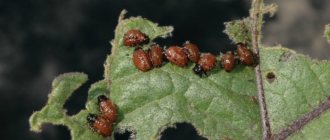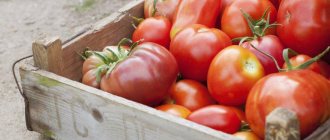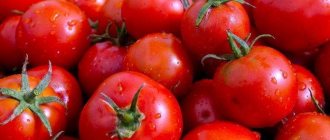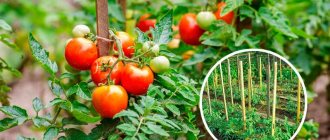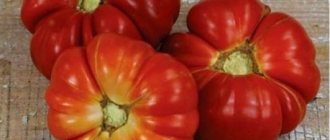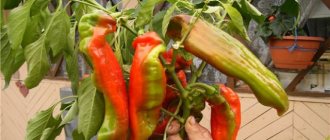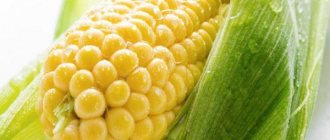This annual herbaceous or perennial shrub plant with bright leaves, native to Africa and Asia, is familiar to many summer residents. Basil is a honey plant, a medicinal plant, used for the industrial production of essential oil and other aromatic substances. But for ordinary gardeners, it is, first of all, one of the most popular spices.
Basil leaves are used mainly as an independent snack or as a seasoning, and less often – flowers and seeds. Its bright taste and aroma, coupled with a rich vitamin composition, become an excellent addition to dishes of meat, fish, vegetables, even tea and desserts. In cooking, the aroma of basil is described as the spicy scent of allspice with a slightly cooling, salty taste. And when mixed with other spices, many of which it goes well with, nuances appear - for example, together with rosemary, basil acquires a peppery smell, with savory it enhances the spiciness of the dish, etc.
The crop is propagated by seeds or cuttings; it is very demanding on soil fertility, moisture, light and heat. There are more than 60 types of basil, plus almost each of them has several varieties and hybrids, which can differ in the height of the bush, size, shape and color of the leaves, smell, and cultivation techniques.
Let's look at the most popular varieties and hybrids of basil, according to reviews from gardeners, with photos and descriptions.
Description
This plant, which belongs to the Yamnotaceae family, is represented by both annual and perennial species. The popular name is fragrant cornflower.
As you can see in the photo of basil, it is a subshrub, the height of which ranges from 40 to 80 cm. The color of the ground part is usually dark green. The stem has moderate branching. The root system is branched and located close to the soil surface.
Characteristic features of the leaves: elongation, oval shape, glossy surface, small size, green or purple color. The leaves sit on short petioles. Along the entire surface of the bush there are glands that produce essential oil.
The flowering period begins in August. The flowers have a small diameter (only 5 mm). They form inflorescences up to 30 cm long. Their color is white or pinkish. One of the most popular varieties is Ararat basil.
The fruits are small and resemble black nuts. Ripen in September.
Varieties according to plant height
Based on the height of growth of the stem of the bush, low-growing, medium-growing and tall varieties of basil are distinguished. This characteristic becomes decisive when choosing a variety for cultivation. If there is little space, then you can choose a low-growing variety.
Low-growing varieties reach no more than 30 cm in height: Basilisk, Gnome, Gourmet, Stella, Malachite, Velvet. They can be grown at home, on the windowsill, all year round.
The average height of the basil varieties reaches 58 cm in height: Ararat, Tender Early, Delight, Greek, Karakum, Smuglyanka.
Tall varieties of spicy herbs reach a height of 82 cm: Pearl of the Moscow Region, Ruby of Cairo, Fantaser, Crimean Violet.
Varieties
The basil genus has approximately seven dozen species. The most common and well-known are the following:
Green curly basil. It is famous for its strong, sweet aroma. Gives high yield. This type is preferred by most Englishmen. Bushes can grow up to 50 cm in height. The edges of the leaves are wavy. The color of the leaf blades is predominantly light green. But there may be varieties with purple leaves.
Genoese basil. The most popular variety. This annual is characterized by large, oval, slightly convex, glossy dark green leaves, tapering at the ends, white flowers, and an intense aroma. The height of the entire plant can reach up to 60 cm. In nature, it can be found in Italy.
Read here Marigolds - cultivation and care in open ground. Main pests and beneficial properties of the plant (video and 120 photos)
Provençal basil. His homeland is the French south. Distinctive features are small jagged leaves, narrow with a smooth surface, a strong pleasant smell, and low bushes. This is an annual.
Growing technology
Basil is unfairly considered a capricious crop. Initially it was grown in the south, but under certain conditions the spice develops quite successfully in temperate climates . The main thing is to provide it with optimal conditions for growth and follow the planting rules.
Optimal conditions
In order for the Green Fragrant Basil bushes to fully develop, they need the following conditions :
- Optimal humidity. The crop does not tolerate swampy and waterlogged areas, so it is planted in places with deep groundwater or on hills.
- Temperature conditions. The crop is considered heat-loving, therefore in temperate climates it is grown only by seedlings, and planting in open ground is carried out after the threat of return frosts has passed.
- Light mode. For full development, basil needs intense lighting, so it is planted in open areas.
- The soil. It should be light and high in humus. On poor soils, the culture develops much worse.
It is better to grow basil using the seedling method . It allows you to quickly get well-developed bushes.
This cultivation method has its own nuances:
- Seeds are sown for seedlings in late March or early April. They are embedded in the soil to a depth of 1 cm in a common container. For the first 10 days, the temperature is maintained at +25...+27°C, after which the seedlings are planted in separate cups.
- Pots of seedlings are grown and hardened in a greenhouse. Hardening is carried out approximately a week before the intended planting in open ground. To do this, watering the plants is limited, and the room is regularly ventilated to reduce the temperature.
- Planting in open ground is carried out in early June, when warm weather stabilizes. To give the plants enough space to grow and develop, they are planted at a distance of 25 cm from each other. The space between rows is 30 cm.
- Planting is carried out in small holes up to 8 cm deep. 1 liter of water is poured into each hole, and the plant is transferred into the soil directly with a lump of earth and sprinkled with soil so that the young leaves and the central bud remain on the surface.
Further care
The success of growing basil depends not only on proper planting, but also on further care of the plant.
Note! Agricultural technology comes down to standard measures: watering, weeding, loosening and fertilizing.
Each stage of care is carried out taking into account these recommendations:
- Watering . Young plants that have just begun to take root in the garden are watered daily, but in moderation. Stronger bushes do not need moisture as much. It is added as the top layer of soil dries. For irrigation, use warm (about +25°C) settled water.
- Loosening and weeding . These procedures are carried out as needed. Weeds are removed regularly, and the soil is loosened after each watering or heavy rain. This procedure destroys the crust on the soil surface and stimulates the flow of moisture and nutrients to the roots.
- Feeding . To actively increase green mass, basil is fed once a month. The first feeding is carried out 2 weeks after planting the seedlings in open ground. For this purpose, use a solution of “Nitrophoska” (2 tablespoons per 12 liters of water). For 1 m² of bed you will need 3-4 liters of ready-made solution. In the future, the same fertilizer is used, but about 3 weeks before harvesting, fertilizing is completely stopped.
Possible problems, diseases, pests
Green aromatic basil is not difficult to grow, as this crop tolerates replanting well and is resistant to drought and pest attacks.
But, if the rules of agricultural technology were violated or the crop was initially planted in the wrong place, problems may still arise :
- Blue-red spots on the leaves. This indicates that the plants do not have enough nutrients. To eliminate the problem, extraordinary fertilizing is carried out using complex mineral fertilizers.
- Leaves dry out or curl. This problem arises when growing spices at home. Drying leaves indicate that the room is too hot and dry. To eliminate the problem, the pots are moved to a cooler place, ventilated and the watering schedule is revised. If the leaf blades curl, it means the plant is suffering from a draft and needs to be rearranged.
- The basil began to bloom. This is an absolutely natural process, but it degrades the quality of the leaves that are used for food. To preserve them, the inflorescences are simply cut off.
Interesting things on the site:
How to properly germinate basil seedlings in a snail
How to prepare and take basil remedies for weight loss
What are the benefits of basil essential oil and how to use it?
Pests rarely attack Green aromatic basil due to its pronounced characteristic odor. The crop is also immune to diseases, but if the bushes are not properly cared for, some diseases develop :
- Black leg . Fungal pathology affecting seedlings. It occurs when watering too often and too much. The stem of the affected plant becomes thin, soft and turns black. It is impossible to save such a seedling, so it is simply thrown away.
- Fusarium . Another fungal disease that occurs in conditions of high temperature and humidity. The stems of young plants become thin and brown, and the tops of adults dry out. If measures are not taken in time, the plant dies.
- Gray rot . Dry spots of light brown color form on the lower leaves. Gradually they spread to the entire bush.
To combat gray mold and fusarium in the initial stages, use an infusion of onion peels (1 part to 4 parts water). The product is infused for a day, and then filtered and sprayed on the plant.
If the disease progresses , use the fungicide "Fitosporin". 1.5 g of the drug (powder) is diluted in 1 liter of water and sprayed on diseased bushes.
Basil as a spice
Basil is a herb. Both fresh and dried leaves can play the role of spice.
Before buying, the flower must be carefully examined - it must look fresh. For harvesting, undamaged, healthy bushes should be selected.
Next, you need to carefully disassemble the leaves, chop them into small pieces and leave them in a dark, dry place to dry. A high-quality finished spice should not contain any by-products.
Characteristics and Features
Some varieties of this herb are used in making tea and sweet dishes. If you store basil correctly, its beneficial qualities will remain for a couple of years.
The plant has the following features:
- high healing properties;
- this is a unique spice with a tart taste and pleasant aroma;
- the ability to use both the spice on its own and in combination with other herbs.
100 g of basil greens contain 23 kilocalories.
- Kitchen accessories: examples of modern options + instructions on how to choose
Maryin root: planting, care, cultivation, medicinal properties and characteristics of the plant (140 photos)
Monarda: types, varieties, planting in open ground, care and cultivation with your own hands (155 photos and video tips)
Useful properties of spices
The beneficial properties of basil are as follows:
- It has an antiseptic effect.
- It can be taken as a remedy to combat depression.
- This spice increases tone and improves overall well-being.
- The plant in essential oil form is used in aromatherapy because it has a calming and relaxing effect.
Despite the above properties of basil, its overdose can lead to:
- poisoning;
- irritation of the mucous membrane;
- allergies;
- cramps.
This spice is contraindicated:
- women bearing a child;
- nursing mothers;
- persons suffering from heart disease;
- people with thrombosis and poor blood clotting;
- with individual intolerance.
In conclusion, we note that this plant is used in many cuisines around the world. It is added to salads, meat and fish dishes. Basil goes especially well with tomatoes and other vegetables. Therefore, be sure to plant it in your garden.
Choosing a landing site
Basil grows well in open, well-lit areas. Therefore, you should make sure that the location is chosen correctly: away from structures that cast a shadow. The soil must be prepared in such a way that it provides the necessary growth and development of the plant. To do this, you need to moisten the planting site with a product containing potassium compounds (potassium chloride, potassium sulfate) and urea in equal proportions with water. The soil itself in which basil will grow should consist of humus, peat, compost and soil.
